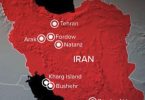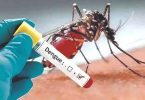Climate change may cause this terrible, but some explain it as biblical experience in the capital city of Madagascar, Antananarivo. Swarms of locusts darkening the skies. This unpleasant pest is driven there by a heat wave that unsettled the bugs out of their usual rural environs.
Travel, transit and tourism to this city came to a standstill on August 28.
The country has endured three successive years of locust swarms, which have wreaked havoc with the African nation’s farmers – the United Nations Food and Agriculture Organization has stepped in.
At risk is the food security of more than 13 million people, nearly 60 percent of the country’s population.
Debriefing on the results of the first locust control campaign (2013/14) of the Three year program in response to the locust plague, was held on Friday 27 June 2014 at the FAO Representation in Madagascar. This debriefing, jointly chaired by the Minister for Agriculture and Rural Development, Roland Ravatomanga, and the FAO Representative, was attended by national stakeholders as well as technical and financial partners.
The first locust control campaign, implemented by FAO in close collaboration with the Government of Madagascar, in particular with the National Coordination Unit, the National Anti-locust Centre and the Plant Protection Directorate, is coming to an end. The challenges related to locust control combined with the topographic and security constraints as well as the absence of national infrastructure have not prevented FAO and its partners from achieving very satisfactory results.
The extensive and adequate use of aircrafts ensured the localization and treatment of locust populations, even in remote areas. To halt the locust plague, the specific objective of the first locust control campaign, more than 99 percent of control operations were carried out by air. Ground control operations can treat on average 200 hectares per day when using a vehicle-mounted sprayer, and even less when using a knapsack sprayer.
Since the start of the first local control campaign, over 1.2 million hectares have been treated – stretching from Mahafaly Plateau, in the South, to Soalala, in the North. In June 2014 alone, all 54 swarms identified during aerial surveys have been treated within a few days of their localization.
During the winter period, from July to September, no locust breeding will occur and only winged locusts (highly mobile in general) will be present, but will rarely be targeted by control operations. Therefore, one aerial base will be maintained during this period in order to ensure the monitoring of the locust populations and carry out possible spot treatments.
The evaluation mission of the first locust control campaign is coming to an end; a comprehensive report will be available by the end of July 2014. A crop assessment is also underway and will be completed by mid-July 2014.
To fully implement the three-year Programme over USD 15 million still needs to be raised. The Three-year Programme is financed by the Government of Madagascar through a World Bank loan, Austria, Belgium, the European Union, France, Italy, Japan, Norway, the United Nations Central Emergencies Response Fund (CERF) and the United States of America. In addition, Algeria, Morocco and Mauritania have contributed to the triangulation of pesticides.
(eTN): Madagascar: Security risk for 13 million people due to insects | re-post license | post content





























